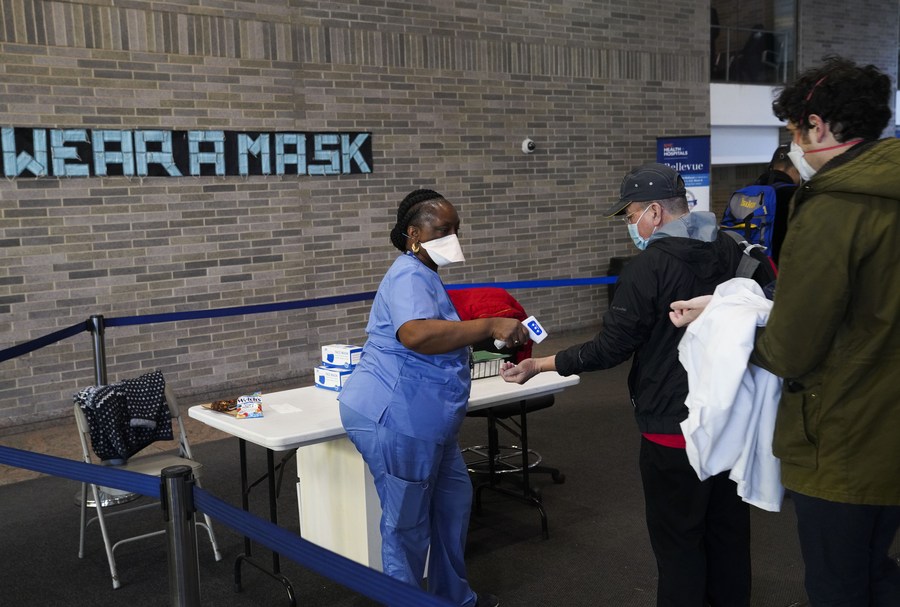Racial, ethnic disparities persist in U.S. outpatient COVID-19 treatment: CDC

A medical worker checks temperatures for visitors at a hospital in New York, the United States, Dec. 13, 2021. (Xinhua/Wang Ying)
During April-July 2022, the percentage of COVID-19 patients aged at least 20 years old treated with Paxlovid was 36 percent and 30 percent lower among Black and Hispanic patients than among White and non-Hispanic patients, respectively.
WASHINGTON, Oct. 27 (Xinhua) -- Racial and ethnic disparities persisted in outpatient COVID-19 treatment in the United States, according to a new study released on Thursday.
These disparities existed among all age groups and patients with immunocompromise, the study published by the U.S. Centers for Disease Control and Prevention (CDC) wrote.
During April-July 2022, the percentage of COVID-19 patients aged at least 20 years old treated with Paxlovid was 36 percent and 30 percent lower among Black and Hispanic patients than among White and non-Hispanic patients, respectively.
Paxlovid is the most commonly prescribed medication and the preferred outpatient therapeutic for eligible patients.
Multiple factors likely contributed to the observed disparities, according to the study.
Persons living in counties that are both high-poverty areas and majority Black, Hispanic, or American Indian or Alaska Native are less likely to have access to COVID-19 treatment facilities, it stressed.
Photos
Related Stories
- Cancer death rates continue to fall in U.S.: report
- COVID-19 is an inverse equity story: U.S. media
- U.S. must eliminate negative factors afftecting military-to-military relations: spokesperson
- 63 pct of Americans live paycheck to paycheck: CNBC
- U.S. Texas goes permitless on guns, police face armed public: NYT
- U.S. is recession-bound, despite Q3 GDP growth: CNN
- Climate activists stage week-long protests in New York City
Copyright © 2022 People's Daily Online. All Rights Reserved.









